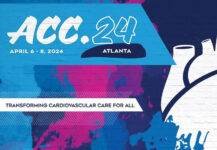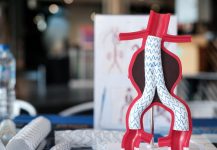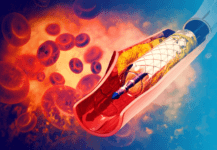Hypertension treatment has evolved considerably over time. However, managing adverse events driven by medication is still challenging, as is low patient adherence, be it because of polimedication or associated costs. Approximately 10% of patients do not reach optimal blood pressure targets, despite adherence optimal medical treatment (OMT); this condition is known as resistant hypertension. Renal…
Sirolimus-Eluting Balloon in Femoropopliteal Disease
Drug-eluting balloons (DEB) with paclitaxel have shown efficacy and safety in the treatment of femoropopliteal disease. Sirolimus-eluting balloons (DEB S) are currently being introduced. This new drug acts during the cellular resting phase (G0) and is considered potentially more effective than paclitaxel, which is a cytostatic drug. However, there is no conclusive evidence in this…
Catheter-Based Therapy for Pulmonary Embolism: Lower Mortality and Rehospitalization?
Venous thromboembolism represents one of the main causes of cardiovascular death. Pulmonary embolism (PE) can vary from asymptomatic to manifesting with shock and sudden death, with a wide clinical spectrum. Patient followup is crucial, seeing as survival PE patients usually experience residual symptoms at long term, such as dyspnea or functional capacity deterioration. For decades,…
Carotid Endarterectomy vs. Carotid Angioplasty in Symptomatic and Asymptomatic Patients: 30-Day Outcomes
Extracranial carotid artery disease represents 15 to 20% of all strokes. Carotid revascularization plays a role in primary and secondary prevention of cerebrovascular events. Outcomes of two common revascularization strategies, Carotid endarterectomy (CAE) and carotid artery stenting (CAS), have been studied and compared. In recent years, complications associated to CAS have dropped thanks to technical…
Drug-Coated Balloon Angioplasty in Femoropopliteal CTOs: Intraluminal or Subintimal?
Patients with peripheral vascular disease often experience femoropopliteal compromise. It is estimated that approximately 50% of lesions in this area are chronic total occlusions (CTO). Even though success rate has improved for peripheral CTO treatments, long term clinical and technical outcomes have not been fully determined yet. Prior research has looked into stenting outcomes in…
Peripheral Vascular Disease: Our Reality in Latin America, with the LATAM SOLACI Peripheral Registry
On the one hand, chronic peripheral vascular disease is on the rise. On the other, over the past 20 years, percutaneous coronary intervention (PCI) has gained considerable ground thanks to various new devices, replacing surgery as an alternative in most scenarios. Both strategies have shown similar results, but PCI has fewer complications and shorter hospital stays.…
ACC 2024 | IVUS-DCB
Drug-coated balloons (DCB) have proven to be effective in the treatment of femoropopliteal pathology, although they entail complications such as recoil, residual stenosis, and dissection. Their outcomes could be improved through proper and enhanced vessel preparation, both before and after the procedure. Intravascular ultrasound (IVUS) offers the advantage of characterizing plaque and assessing vessel diameter.…
IN.PACT Outcomes at 5 Years
Over time, percutaneous coronary intervention (PCI) with drug coated balloons (DCB) have been shown more beneficial than conventional PCI. However, in many cases, stenting is required to treat suboptimal results. Even though several studies have looked into this scenario, long term durability still calls for research. This was a 5 year thorough analysis of the…
Treatment of Femoropopliteal Lesions with Low-Dose vs. High-Dose Drug-Coated Balloons
The use of drug-covered balloons (DCBs) has increased significantly for the endovascular treatment of femoropopliteal arterial disease. Previous studies on first-generation high-dose DCB (HD-DCB) have validated its benefits, thus supporting its recommendation in current clinical guidelines. However, there have been reports of adverse effects associated with paclitaxel and its excipients. Second-generation, lower-dose DCBs (LD-DCB) have…
Intramural Hematoma
Intramural hematoma (IMH) is considered a subtype of acute aortic syndrome (AAS), and some authors describe it as a developmental stage that might cause high morbimortality events such as dissection, aneurysm, or aortic rupture. One of the CT findings associated with IMH is focal contrast enhancement (FCE) within the intramural hematoma, with a reported incidence…
LIFE-BTK | Critical Limb Ischemia: Use of Bioresorbable Scaffold in Infrapatellar Lesions (LIFE-BTK)
Advanced stages of peripheral artery disease cause significant limitations in patients, such as critical limb ischemia (CLI), which manifests with resting pain and gangrene or ulcers of difficult resolution. Uncontrolled progression of this pathology might lead to major amputation, reduced life expectancy and increased healthcare costs. Prior research on infrapopliteal territory have shown contradicting results.…










